当前位置:网站首页>Create Sentinel high-availability cluster current limiting middleware from -99
Create Sentinel high-availability cluster current limiting middleware from -99
2022-08-04 17:32:00 【Ai Xiaoxian】
接上篇Sentinel集群限流探索,上次简单提到了集群限流的原理,然后用官方给的 demo 简单修改了一下,可以正常运行生效.
这一次需要更进一步,基于 Sentinel 实现内嵌式集群限流的高可用方案,并且包装成一个中间件 starter 提供给三方使用.
对于高可用,我们主要需要解决两个问题,这无论是使用内嵌或者独立模式都需要解决的问题,相比而言,内嵌式模式更简单一点.
- 集群 server 自动选举
- 自动故障转移
- Sentinel-Dashboard持久化到Apollo
集群限流
首先,考虑到大部分的服务可能都不需要集群限流这个功能,因此实现一个注解用于手动开启集群限流模式,只有开启注解的情况下,才去实例化集群限流的 Bean 和限流数据.
@Target({
ElementType.TYPE})
@Retention(RetentionPolicy.RUNTIME)
@Import({
EnableClusterImportSelector.class})
@Documented
public @interface SentinelCluster {
}
public class EnableClusterImportSelector implements DeferredImportSelector {
@Override
public String[] selectImports(AnnotationMetadata annotationMetadata) {
return new String[]{
ClusterConfiguration.class.getName()};
}
}
这样写好之后,当扫描到有我们的 SentinelCluster 注解的时候,就会去实例化 ClusterConfiguration.
@Slf4j
public class ClusterConfiguration implements BeanDefinitionRegistryPostProcessor, EnvironmentAware {
private Environment environment;
@Override
public void postProcessBeanDefinitionRegistry(BeanDefinitionRegistry registry) throws BeansException {
BeanDefinitionBuilder beanDefinitionBuilder = BeanDefinitionBuilder.genericBeanDefinition(ClusterManager.class);
beanDefinitionBuilder.addConstructorArgValue(this.environment);
registry.registerBeanDefinition("clusterManager", beanDefinitionBuilder.getBeanDefinition());
}
@Override
public void postProcessBeanFactory(ConfigurableListableBeanFactory beanFactory) throws BeansException {
}
@Override
public void setEnvironment(Environment environment) {
this.environment = environment;
}
}
在配置中去实例化用于管理集群限流的ClusterManager,这段逻辑和我们之前文章中使用到的一般无二,注册到ApolloDataSource之后自动监听Apollo的变化达到动态生效的效果.
@Slf4j
public class ClusterManager {
private Environment environment;
private String namespace;
private static final String CLUSTER_SERVER_KEY = "sentinel.cluster.server"; //服务集群配置
private static final String DEFAULT_RULE_VALUE = "[]"; //集群默认规则
private static final String FLOW_RULE_KEY = "sentinel.flow.rules"; //限流规则
private static final String DEGRADE_RULE_KEY = "sentinel.degrade.rules"; //降级规则
private static final String PARAM_FLOW_RULE_KEY = "sentinel.param.rules"; //热点限流规则
private static final String CLUSTER_CLIENT_CONFIG_KEY = "sentinel.client.config"; //客户端配置
public ClusterManager(Environment environment) {
this.environment = environment;
this.namespace = "YourNamespace";
init();
}
private void init() {
initClientConfig();
initClientServerAssign();
registerRuleSupplier();
initServerTransportConfig();
initState();
}
private void initClientConfig() {
ReadableDataSource<String, ClusterClientConfig> clientConfigDs = new ApolloDataSource<>(
namespace,
CLUSTER_CLIENT_CONFIG_KEY,
DEFAULT_SERVER_VALUE,
source -> JacksonUtil.from(source, ClusterClientConfig.class)
);
ClusterClientConfigManager.registerClientConfigProperty(clientConfigDs.getProperty());
}
private void initClientServerAssign() {
ReadableDataSource<String, ClusterClientAssignConfig> clientAssignDs = new ApolloDataSource<>(
namespace,
CLUSTER_SERVER_KEY,
DEFAULT_SERVER_VALUE,
new ServerAssignConverter(environment)
);
ClusterClientConfigManager.registerServerAssignProperty(clientAssignDs.getProperty());
}
private void registerRuleSupplier() {
ClusterFlowRuleManager.setPropertySupplier(ns -> {
ReadableDataSource<String, List<FlowRule>> ds = new ApolloDataSource<>(
namespace,
FLOW_RULE_KEY,
DEFAULT_RULE_VALUE,
source -> JacksonUtil.fromList(source, FlowRule.class));
return ds.getProperty();
});
ClusterParamFlowRuleManager.setPropertySupplier(ns -> {
ReadableDataSource<String, List<ParamFlowRule>> ds = new ApolloDataSource<>(
namespace,
PARAM_FLOW_RULE_KEY,
DEFAULT_RULE_VALUE,
source -> JacksonUtil.fromList(source, ParamFlowRule.class)
);
return ds.getProperty();
});
}
private void initServerTransportConfig() {
ReadableDataSource<String, ServerTransportConfig> serverTransportDs = new ApolloDataSource<>(
namespace,
CLUSTER_SERVER_KEY,
DEFAULT_SERVER_VALUE,
new ServerTransportConverter(environment)
);
ClusterServerConfigManager.registerServerTransportProperty(serverTransportDs.getProperty());
}
private void initState() {
ReadableDataSource<String, Integer> clusterModeDs = new ApolloDataSource<>(
namespace,
CLUSTER_SERVER_KEY,
DEFAULT_SERVER_VALUE,
new ServerStateConverter(environment)
);
ClusterStateManager.registerProperty(clusterModeDs.getProperty());
}
}
这样的话,一个集群限流的基本功能已经差不多是OK了,上述步骤都比较简单,按照官方文档基本都能跑起来,接下来要实现文章开头提及到的核心的几个功能了.
自动选举&故障转移
自动选举怎么实现?简单点,不用考虑那么多,每台机器启动成功之后直接写入到 Apollo 当中,第一个写入成功的就是 Server 节点.
这个过程为了保证并发带来的问题,我们需要加锁确保只有一台机器成功写入自己的本机信息.
由于我使用 Eureka 作为注册中心,Eureka 又有CacheRefreshedEvent本地缓存刷新的事件,基于此每当本地缓存刷新,我们就去检测当前 Server 节点是否存在,然后根据实际情况去实现选举.

首先在 spring.factories 中添加我们的监听器.
org.springframework.boot.autoconfigure.EnableAutoConfiguration=com.test.config.SentinelEurekaEventListener
监听器只有当开启了集群限流注解SentinelCluster之后才会生效.
@Configuration
@Slf4j
@ConditionalOnBean(annotation = SentinelCluster.class)
public class SentinelEurekaEventListener implements ApplicationListener<CacheRefreshedEvent> {
@Resource
private DiscoveryClient discoveryClient;
@Resource
private Environment environment;
@Resource
private ApolloManager apolloManager;
@Override
public void onApplicationEvent(EurekaClientLocalCacheRefreshedEvent event) {
if (!leaderAlive(loadEureka(), loadApollo())) {
boolean tryLockResult = redis.lock; //redis或者其他加分布式锁
if (tryLockResult) {
try {
flush();
} catch (Exception e) {
} finally {
unlock();
}
}
}
}
private boolean leaderAlive(List<ClusterGroup> eurekaList, ClusterGroup server) {
if (Objects.isNull(server)) {
return false;
}
for (ClusterGroup clusterGroup : eurekaList) {
if (clusterGroup.getMachineId().equals(server.getMachineId())) {
return true;
}
}
return false;
}
}
OK,其实看到代码已经知道我们把故障转移的逻辑也实现了,其实道理是一样的.
第一次启动的时候 Apollo 中的 server 信息是空的,所以第一台加锁写入的机器就是 server 节点,后续如果 server 宕机下线,本地注册表缓存刷新,对比 Eureka 的实例信息和 Apollo 中的 server,如果 server 不存在,那么就重新执行选举的逻辑.

需要注意的是,本地缓存刷新的时间极端情况下可能会达到几分钟级别,那么也就是说在服务下线的可能几分钟内没有重新选举出新的 server 节点整个集群限流是不可用的状态,对于业务要求非常严格的情况这个方案就不太适用了.
对于 Eureka 缓存时间同步的问题,可以参考之前的文章Eureka服务下线太慢,电话被告警打爆了.
Dashboard持久化改造
到这儿为止,我们已经把高可用方案实现好了,接下来最后一步,只要通过 Sentinel 自带的控制台能够把配置写入到 Apollo 中,那么应用就自然会监听到配置的变化,达到动态生效的效果.
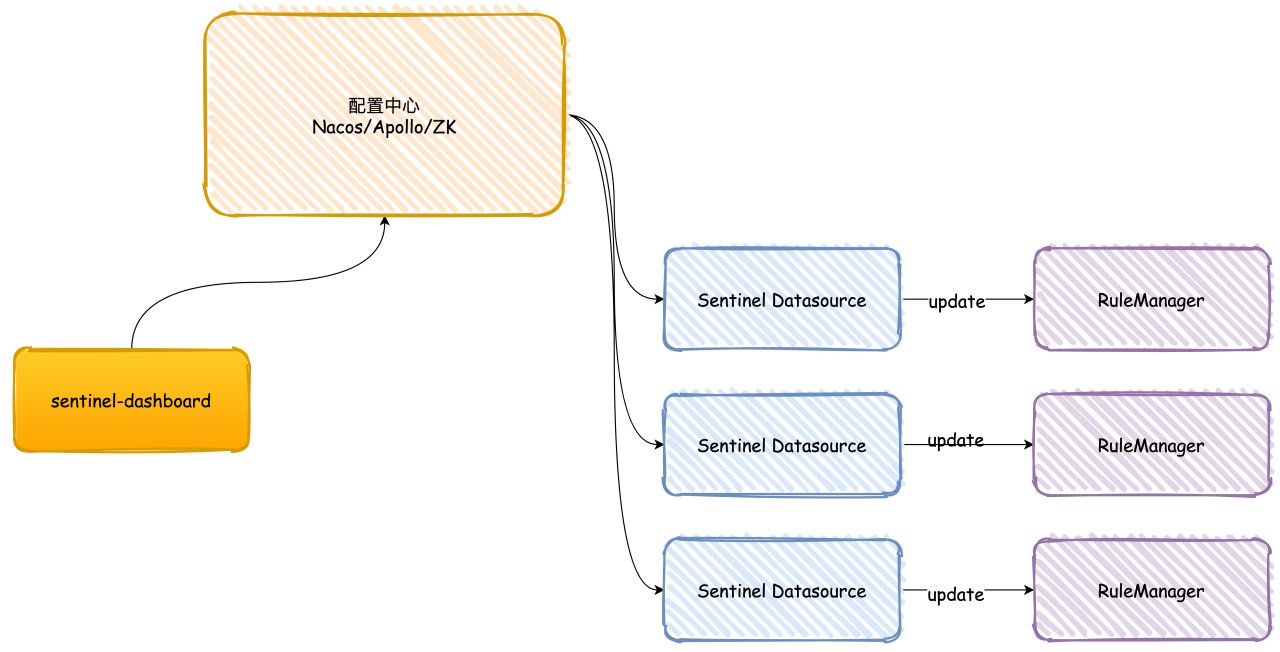
根据官方的描述,官方已经实现了FlowControllerV2用于集群限流,同时在测试目录下有简单的案例帮助我们快速实现控制台的持久化的逻辑.
我们只要实现DynamicRuleProvider,同时注入到Controller中使用即可,这里我们实现flowRuleApolloProvider用于提供从Apollo查询数据,flowRuleApolloPublisher用于写入限流配置到Apollo.
@RestController
@RequestMapping(value = "/v2/flow")
public class FlowControllerV2 {
private final Logger logger = LoggerFactory.getLogger(FlowControllerV2.class);
@Autowired
private InMemoryRuleRepositoryAdapter<FlowRuleEntity> repository;
@Autowired
@Qualifier("flowRuleApolloProvider")
private DynamicRuleProvider<List<FlowRuleEntity>> ruleProvider;
@Autowired
@Qualifier("flowRuleApolloPublisher")
private DynamicRulePublisher<List<FlowRuleEntity>> rulePublisher;
}
实现方式很简单,provider 通过 Apollo 的 open-api 从 namespace 中读取配置,publisher 则是通过 open-api 写入规则.
@Component("flowRuleApolloProvider")
public class FlowRuleApolloProvider implements DynamicRuleProvider<List<FlowRuleEntity>> {
@Autowired
private ApolloManager apolloManager;
@Autowired
private Converter<String, List<FlowRuleEntity>> converter;
@Override
public List<FlowRuleEntity> getRules(String appName) {
String rules = apolloManager.loadNamespaceRuleList(appName, ApolloManager.FLOW_RULES_KEY);
if (StringUtil.isEmpty(rules)) {
return new ArrayList<>();
}
return converter.convert(rules);
}
}
@Component("flowRuleApolloPublisher")
public class FlowRuleApolloPublisher implements DynamicRulePublisher<List<FlowRuleEntity>> {
@Autowired
private ApolloManager apolloManager;
@Autowired
private Converter<List<FlowRuleEntity>, String> converter;
@Override
public void publish(String app, List<FlowRuleEntity> rules) {
AssertUtil.notEmpty(app, "app name cannot be empty");
if (rules == null) {
return;
}
apolloManager.writeAndPublish(app, ApolloManager.FLOW_RULES_KEY, converter.convert(rules));
}
}
ApolloManager实现了通过open-api查询和写入配置的能力,使用需要自行配置 Apollo Portal 地址和 token,这里不赘述,可以自行查看 Apollo 的官方文档.
@Component
public class ApolloManager {
private static final String APOLLO_USERNAME = "apollo";
public static final String FLOW_RULES_KEY = "sentinel.flow.rules";
public static final String DEGRADE_RULES_KEY = "sentinel.degrade.rules";
public static final String PARAM_FLOW_RULES_KEY = "sentinel.param.rules";
public static final String APP_NAME = "YourAppName";
@Value("${apollo.portal.url}")
private String portalUrl;
@Value("${apollo.portal.token}")
private String portalToken;
private String apolloEnv;
private String apolloCluster = "default";
private ApolloOpenApiClient client;
@PostConstruct
public void init() {
this.client = ApolloOpenApiClient.newBuilder()
.withPortalUrl(portalUrl)
.withToken(portalToken)
.build();
this.apolloEnv = "default";
}
public String loadNamespaceRuleList(String appName, String ruleKey) {
OpenNamespaceDTO openNamespaceDTO = client.getNamespace(APP_NAME, apolloEnv, apolloCluster, "default");
return openNamespaceDTO
.getItems()
.stream()
.filter(p -> p.getKey().equals(ruleKey))
.map(OpenItemDTO::getValue)
.findFirst()
.orElse("");
}
public void writeAndPublish(String appName, String ruleKey, String value) {
OpenItemDTO openItemDTO = new OpenItemDTO();
openItemDTO.setKey(ruleKey);
openItemDTO.setValue(value);
openItemDTO.setComment("Add Sentinel Config");
openItemDTO.setDataChangeCreatedBy(APOLLO_USERNAME);
openItemDTO.setDataChangeLastModifiedBy(APOLLO_USERNAME);
client.createOrUpdateItem(APP_NAME, apolloEnv, apolloCluster, "default", openItemDTO);
NamespaceReleaseDTO namespaceReleaseDTO = new NamespaceReleaseDTO();
namespaceReleaseDTO.setEmergencyPublish(true);
namespaceReleaseDTO.setReleasedBy(APOLLO_USERNAME);
namespaceReleaseDTO.setReleaseTitle("Add Sentinel Config Release");
client.publishNamespace(APP_NAME, apolloEnv, apolloCluster, "default", namespaceReleaseDTO);
}
}
对于其他规则,比如降级、热点限流都可以参考此方式去修改,当然控制台要做的修改肯定不是这一点点,比如集群的flowId默认使用的单机自增,这个肯定需要修改,还有页面的传参、查询路由的修改等等,比较繁琐,就不在此赘述了,总归也就是工作量的问题.
好了,本期内容就这些,我是艾小仙,我们下期见.
边栏推荐
猜你喜欢
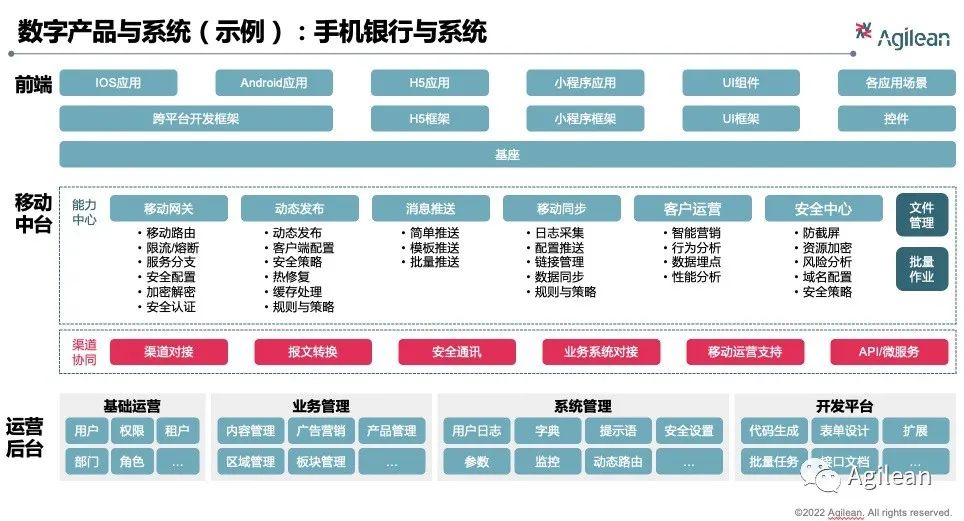
数字化金融企业的产品体系长啥样?
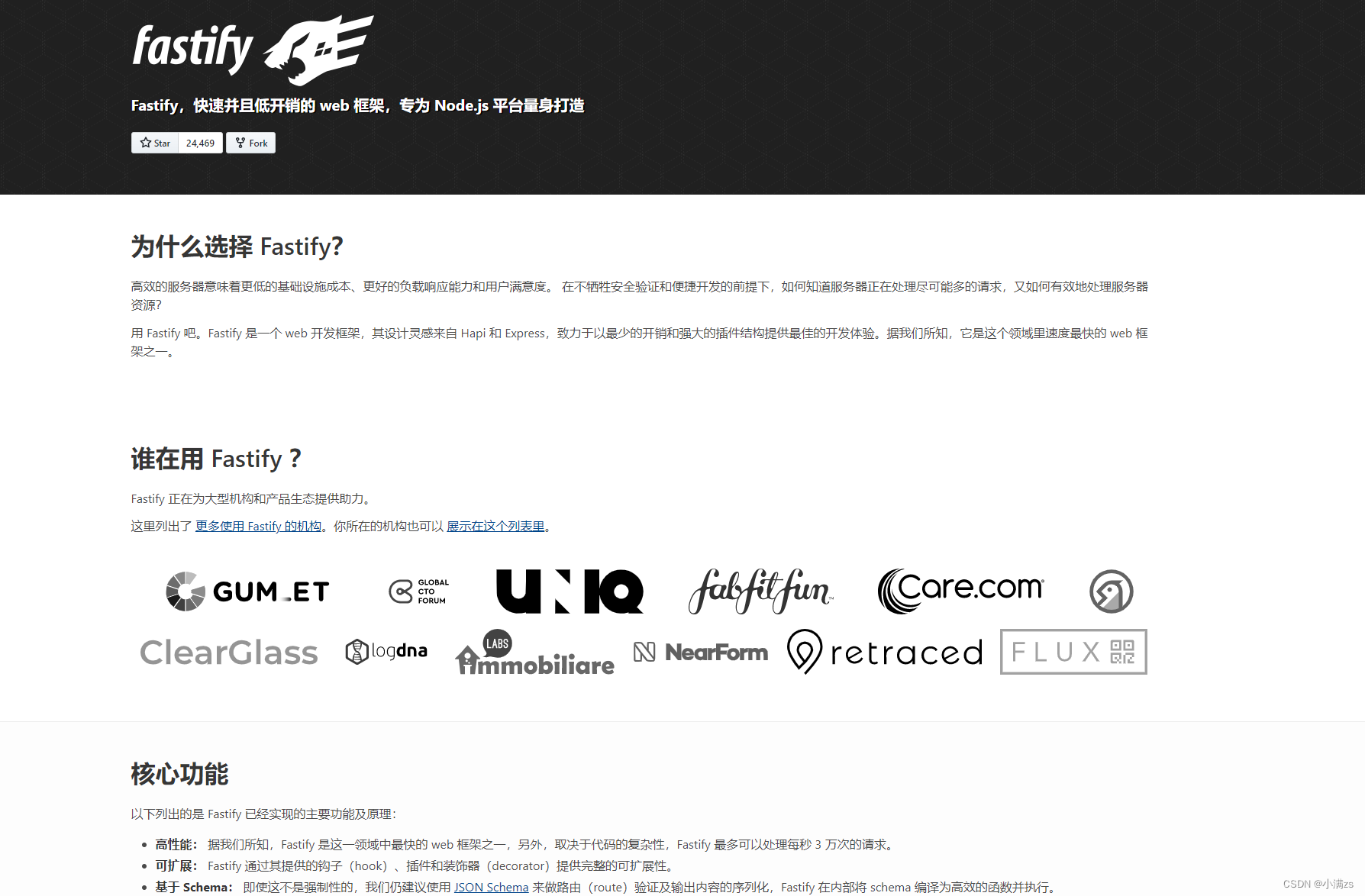
小满nestjs(第一章 介绍nestjs)
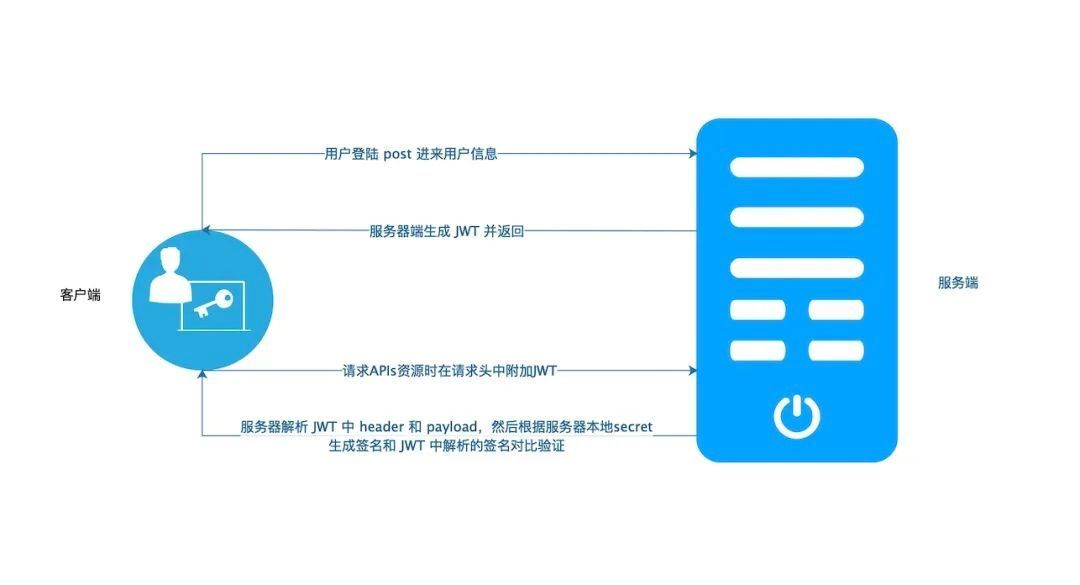
JWT主动校验Token是否过期
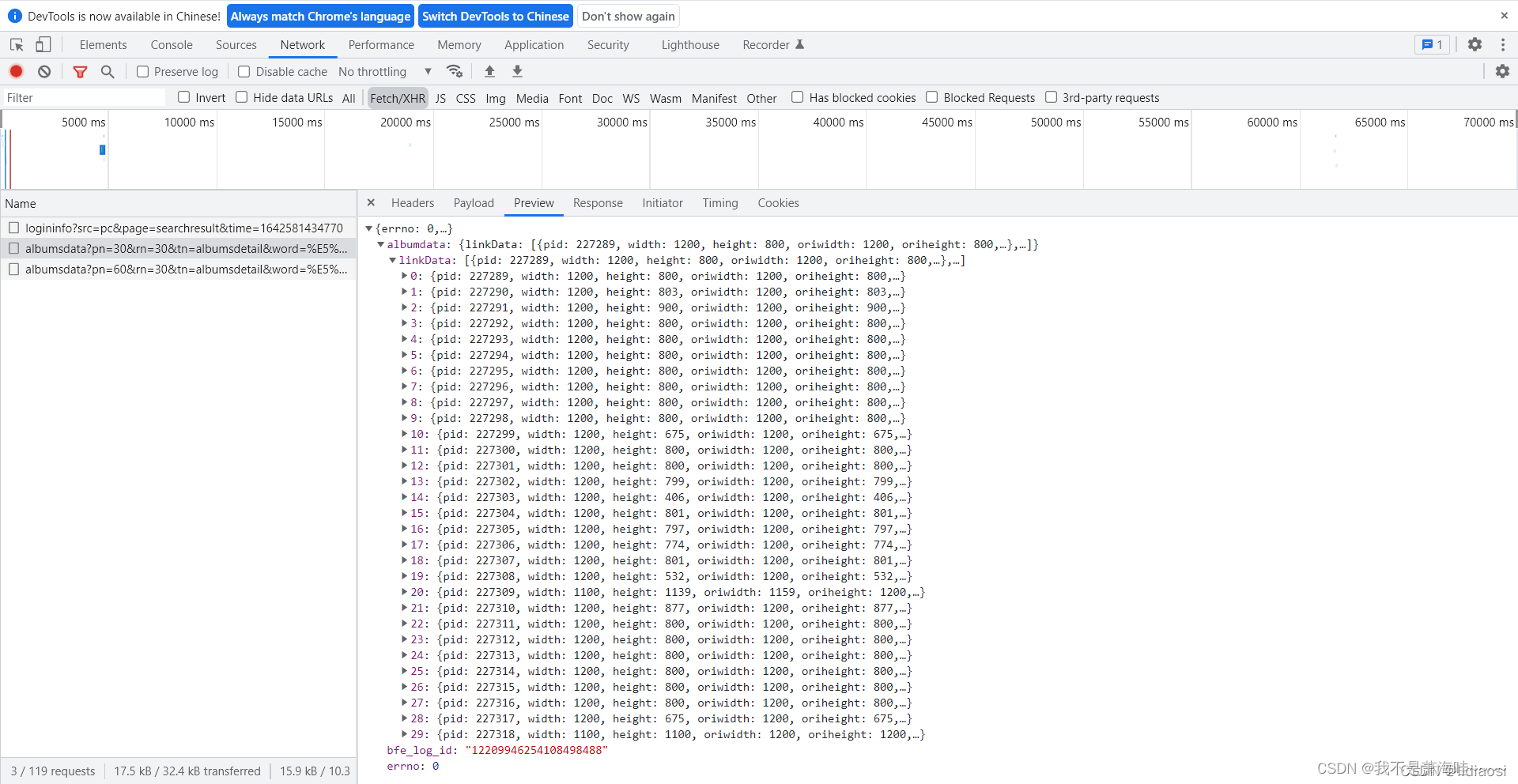
pyhon爬虫之爬取图片(亲测可用)
![【 Gazebo introductory tutorial] speak the second model library into robot modeling and visualization (editor) model](/img/db/44a1ac5338879c9e6edd933c28c0af.png)
【 Gazebo introductory tutorial] speak the second model library into robot modeling and visualization (editor) model

知乎高赞:拼多多和国家电网,选哪个?
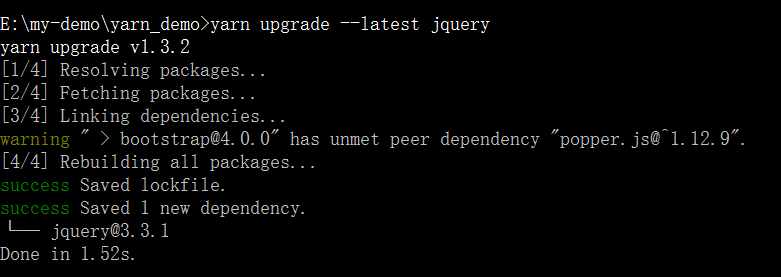
yarn详细入门教程

88. (the home of cesium) cesium polymerization figure

Understand Chisel language. 32. Chisel advanced hardware generator (1) - parameterization in Chisel
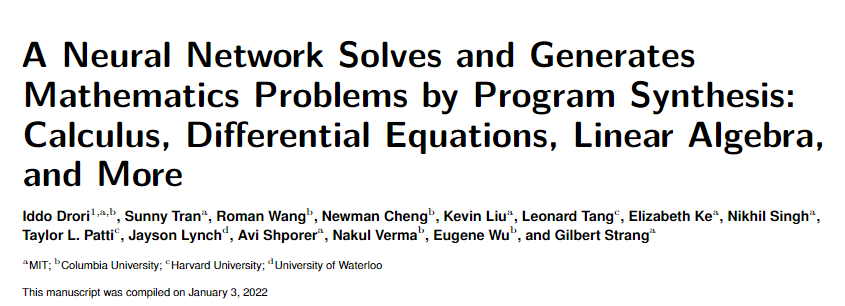
NLP未来,路在何方?从学术前沿和业界热点谈起
随机推荐
Liunx删除乱码文件
yarn detailed introductory tutorial
华为云计算HCIE之oceanstor仿真器的使用操作
小程序学习目标
R语言计算时间序列数据的逐次差分(successive differences):使用diff函数计算时间序列数据的逐次差分值
化学制品制造业数智化供应链管理系统:打造智慧供应体系,赋能企业产效提升
R语言ggplot2可视化:使用ggpubr包的ggbarplot函数可视化柱状图、color参数指定柱状图的边框的色彩
R语言ggplot2可视化:使用patchwork包的plot_layout函数将多个可视化图像组合起来,nrow参数指定行的个数、byrow参数指定按照列顺序排布图
学习探索-网站中引入百度统计
Fork/Join框架
【图像分类】2021-DeiT
基于clipboard.js对复制组件的封装
接口测试项目(非常值得练手)
44. 通配符匹配 ●●● & HJ71 字符串通配符 ●●
【日记】nodejs构建API框架以及RESTful API 和 JSON-RPC的取舍
WPF 光标初始化的时候 temp 文件夹满了无法创建
hi, 请问下这是什么问题, 我看官网的example就是mysql的, 咋提示不支持?
【MySQL】数据库的4中隔离级别
树莓派通过API向企业微信推送图文
小程序笔记3